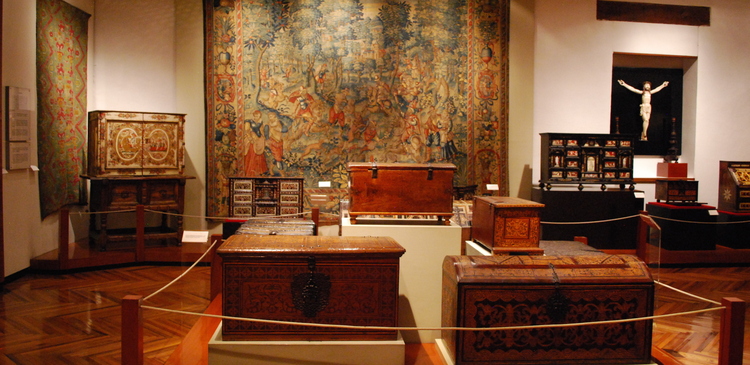The best attractions in Mexico City’s historic center, according to the experts
From Art Deco architecture to ancient civilizations, there’s something for everyone in Mexico’s bustling historic center
Since being named the must-visit destination of 2016 by The New York Times, vibrant Mexico City has continued to make its mark on the international travel scene. For most first-time visitors – and even returning devotees – the historic center marks the beating heart of the Mexican capital, a place where ancient history and contemporary culture collide.
To get the most out of your visit to Mexico City’s historic center, then, here are the best attractions to add to your itinerary.
The streets of Mexico City are papered with literary intrigue, but nowhere is that as apparent as the Plaza de Santo Domingo. Once a plaza populated by writers, scribes and poets, it’s now a quieter, quainter alternative to the nearby zocalo, one hemmed in by a historic church and rows of print- and book-selling vendors capitalizing off the history of the place.

Named for a German-born financier and art collector, the Franz Mayer Museum contains one of Latin America’s most impressive – and expansive – collections of Mexican artefacts. There are few places in the historic center that offer such an introduction to Mexican handicrafts, from tin work and Talavera pottery emblematic of Puebla, to alebrijes from Oaxaca and elaborate textiles.

A long-time favorite with visitors to Mexico City, the National Palace – which runs the length of the central zocalo – has, up until recently, been a building defined by mere formality, a gathering place for pomp and circumstance…or just plain protest. That changed with the election of Andrés Manuel López Obrador, who intends to reside there for the length of his presidency. Categorized by AFAR as “a place of history, both inside and out”, visits to the spectacular first-floor murals will continue as before though.

The Templo Mayor was once a site of great significance for the Mexica people, and yet it was disparaged and destroyed by the colonizing Spaniards who eventually pilfered the stone to build the neighboring cathedral. It wasn’t until the 70s, when it was stumbled upon by accident, that the Templo Mayor was uncovered once again, somewhat restored, and then revered once more, this time as one of Mexico’s most important – and must-visit – archaeological sites.

Mariachi may have been born in the western state of Jalisco, but it comes to life every evening as Mexico City’s best bands “belt out heartfelt ballads in this festive square”, writes Lonely Planet. Once known as Plaza Santa Cecilia, it was renamed after Lieutenant Colonel José Garibaldi in the aftermath of the Mexican Revolution. Nowadays though it’s best known as an excellent, open-air destination for a spot of live music of a Mexico City evening.

Truly gorgeous Mexican handicrafts take center stage at the Museo de Arte Popular in Mexico City’s historic center. It’s not just about the art in and of itself though. As Michelin Guide notes, it’s worth heading to the second floor for a fascinating look at “the close links between traditional Mexican art and the country's natural resources.” The building is nothing to be sniffed at either, given that it’s an exquisite example of 1920s Art Deco.

We think the Palacio de Bellas Artes is the most magnificent building in the capital. That’s saying something in as architecturally-rich a place as Mexico City, but it’s far from just a pretty face. Housed behind the white Neoclassical and Art Nouveau façade, and beneath the twinkling, orange-hued roof, are concert halls, rotating art exhibitions and what Lonely Planet call the “immense murals by world-famous Mexican artists”.

Stretching into the sky above the bustling streets below, the Torre Latino is one of the best places to catch a glimpse of the ever-beguiling and astonishingly expansive Mexico City skyline. We recommend heading up right before sunset, so you can watch evening descend over the capital. Besides, the city rarely looks better than when it’s a-twinkle with the light of a thousand office blocks and apartment buildings. Fodor’s doesn’t call Torre Latino “Mexico City's version of the Empire State Building” for nothing.

Mexico City’s House of Tiles, known in Spanish as the Casa de los Azulejos, is a landmark of the capital which dates back to the 18th century. While the interior is worth a peek, not least for the presence of a José Clemente Orozco mural and the flagship Sanborn’s Restaurant (we recommend the enchiladas suizas) the real appeal is all on the outside; elaborate Pueblan tiles cover every inch of the building’s façade, from floor to tiled roof.



